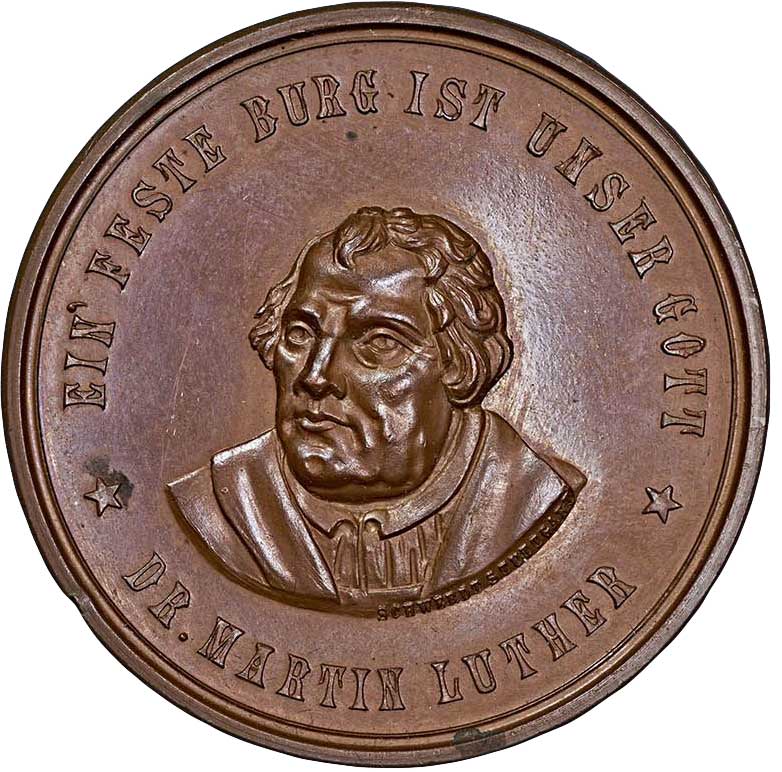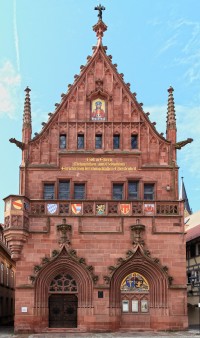Vorderseite: Brustbild Luthers frontal im Talar, den Kopf nach halb links gewandt; am Armabschnitt signiert SCHWERDT STUTTGART. Umschrift: EIN‘ FESTE BURG IST UNSER GOTT, unten * DR. MARTIN LUTHER
Rückseite: Seitenansicht der Kirche; im Abschnitt WITTENBERG / 1892. Umschrift: SCHLOSSKIRCHE NEU HERGESTELLT UNT. KAISER WILHELM II.
Gravier- und Prägeanstalt Adolf Schwerdt, Stuttgart
Wie Inv. Nr. MHB 201
en

